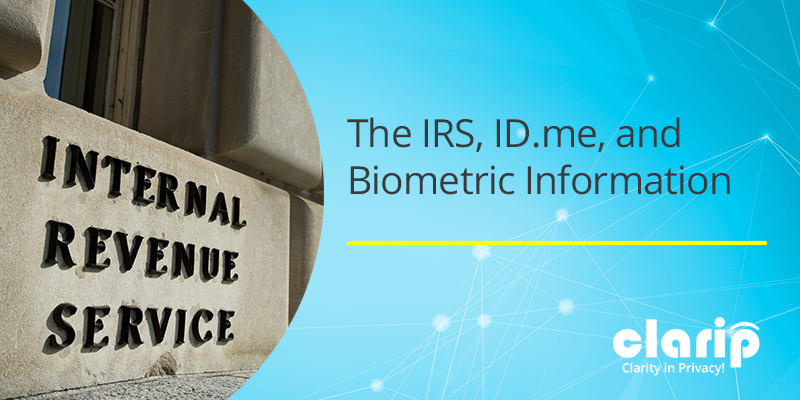The IRS, ID.me, and Biometric Information

The Internal Revenue Service has announced a partnership with a third party technology provider, ID.me. Driven by the desire to improve digital identity verification, the IRS has partnered with ID.me. With identity theft increasing and more and more information about people being collected by hackers and other nefarious actors due to data breaches and phishing attacks, the IRS has decided to take proactive steps to verify the identities of taxpayers.
For the enhanced identity verification features, taxpayers will have to create an account with ID.me or access their existing ID.me account. For identity verification, ID.me requires taxpayers to provide a photo of one of their identity documents, such as their driver’s license, state ID, or passport. Then they will be required to take a digital selfie and submit it to ID.me as well. With these pieces in place, ID.me should be able to verify the taxpayer’s identity. Once verified, they can access online IRS services.
At rollout, only certain online IRS services were available through the ID.me identity verification. They consisted of Child Tax Credit Update Portal, Online Account, Get Transcript Online, Get an Identity Protection PIN, and Online Payment Agreement. More features will be accessible from the ID.me identity verification as time goes on.
For those users who are capable of browsing the internet, but sometimes struggle with technology issues, there is an ID.me IRS help website where taxpayers can submit support tickets to receive assistance with any related identity verification problems.
Privacy-wise, this development is something of a double-edged sword. On the one hand, it is intended and in many instances is likely to ensure that taxpayer information is provided only to the person who legally has a right to the data. On the other hand, to be granted the greater privacy protection, taxpayers need to provide more private information to the third party provider. Biometric information, from the selfie the taxpayer must take is sensitive personal information. Putting more of your data out into the digital world entails its own privacy risks.
At Clarip, we understand the risks associated with privacy. We provide technology solutions to minimize the risks and to allow companies to comply with data privacy laws and with user requests. We offer fully automated data subject request fulfillment, data mapping, website scanning, vendor management, consent management, and much more. Visit our site, www.clarip.com or call us at 1-888-252-5653 to learn more.

 Data Risk Intelligence
Data Risk Intelligence Automated Data Mapping
Automated Data Mapping Do Not Sell/Do Not Share
Do Not Sell/Do Not Share Cookie Banner Solutions
Cookie Banner Solutions Consent & Preferences
Consent & Preferences Data Rights Requests
Data Rights Requests
